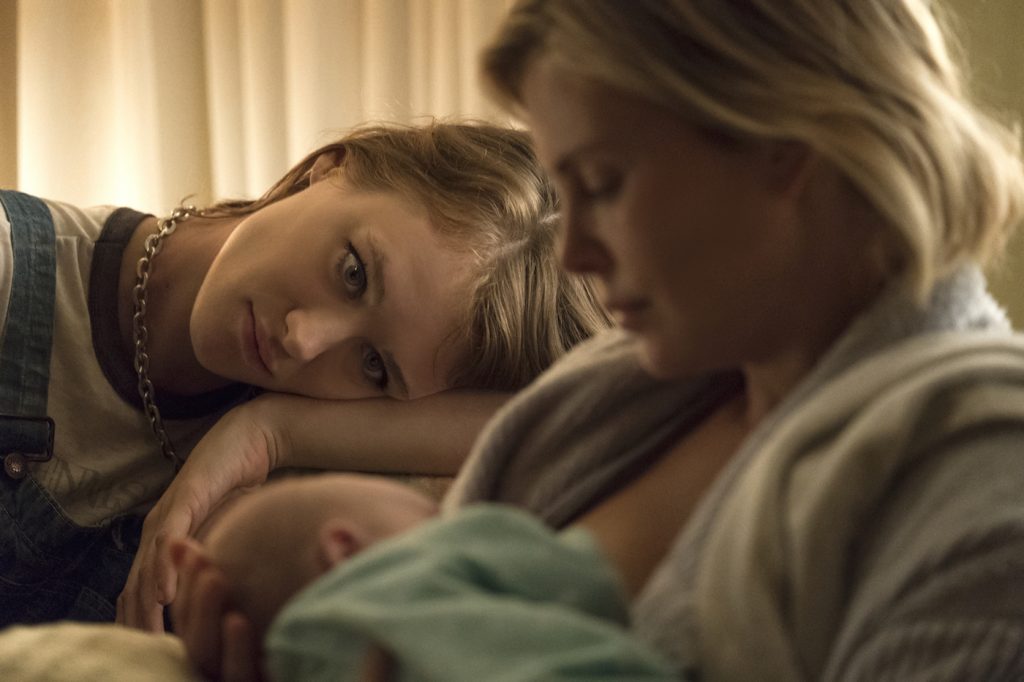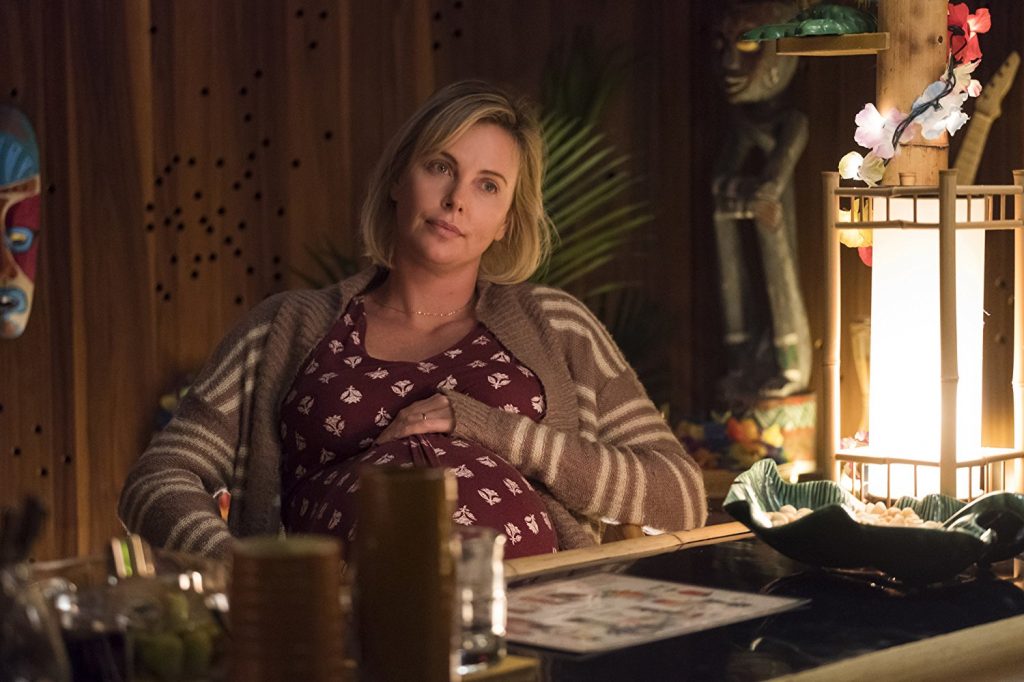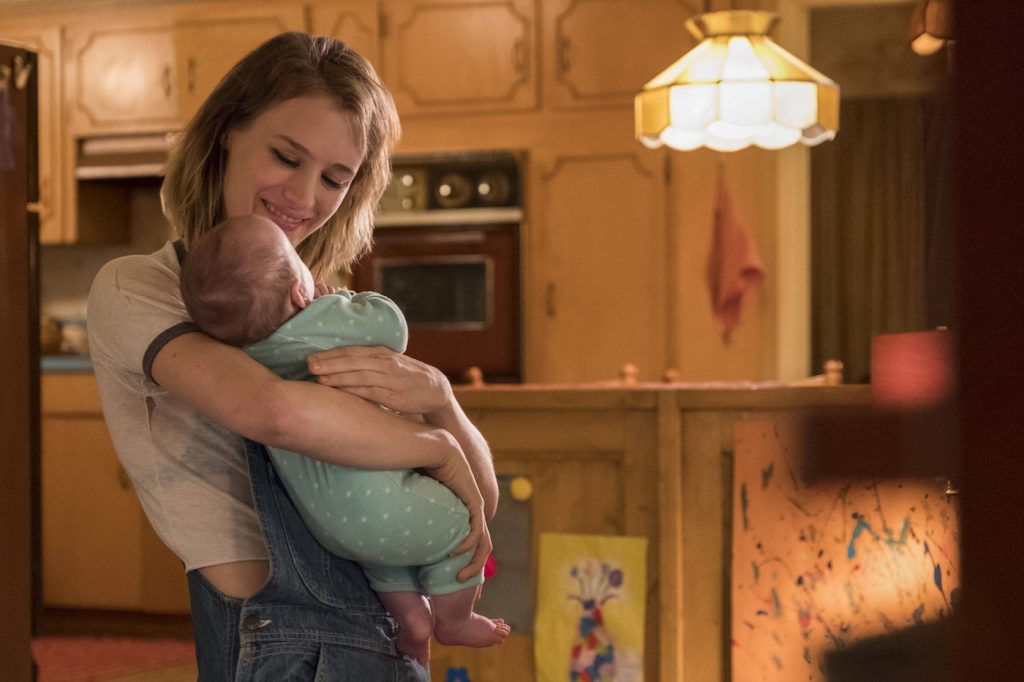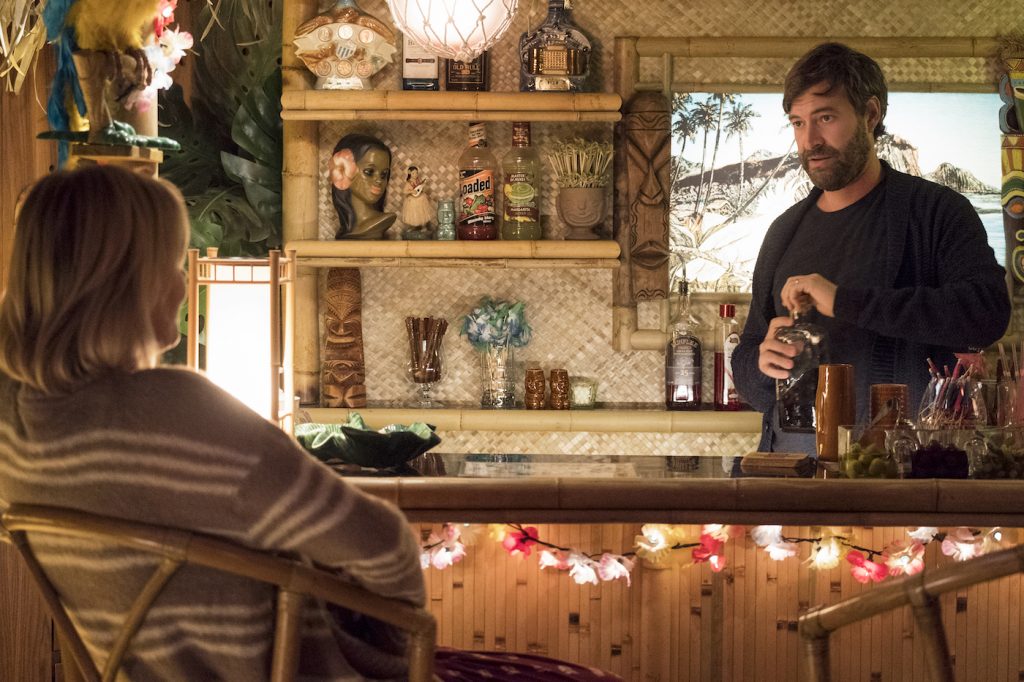Tully‘s Production Designer Anastasia Masaro on Finding Magic in Life’s Mess
It’s been seven years since Jason Reitman and Diablo Cody, the creative forces behind Juno and Young Adult, last collaborated. Now, with Tully, the pair close out a thematic trilogy of sorts – stories that have, at least in some way, been autobiographical for the pair of creatives. “They have this kind of connective tissue between all of them,” Reitman said at the New York premiere of the film. “I think of all three of them as movies about not knowing where you’re supposed to be in the timeline of life: Juno is about growing up too fast, and Young Adult is about growing up too slow.”
In Tully, Charlize Theron stars as Marlowe, a mother of three who’s spent the last few years morphing from Bushwick baby to harried suburban matriarch. Overworked and overwhelmed, Marlowe enlists the help of a “night nurse,” an enigmatic 20-something named Tully (Mackenzie Davis) who immediately begins to blur the line between hired help and member of the household. Much of the film unfolds within the confines of the family’s low-ceilinged, tchotchke-littered starter home, which functions as both a cozy haven and a lingering reminder of what Marlowe feels she’s given up in favor of her nuclear family.
Ahead of the film’s release, we had a chance to speak with Anastasia Masaro, the production designer on Tully whose previous work includes The Imaginarium of Doctor Parnassus and Mama, about the process behind creating the charming chaos that serves as the backdrop for Marlowe and Tully’s emotional revelations, the unconventional research she did to formulate Tully’s interiors, what it was like to work closely with Reitman on set and the small but surprising contribution she made to the script.
To me, these kinds of spaces, that look lived in and even a little dirty, these have to be the hardest spaces when it comes to production design and set decorating. Is that true?
Oh, absolutely. I’m glad you mentioned that. It’s just as much work as doing a horror movie cabin or something. We’re still layering all that life in there. When we first got there, Jason actually scouted that house on his own. And then we went out and scouted some more houses, and we came back to the original one that Jason had found. The lovely family that lived there was really great and let us do pretty much anything we wanted. We painted everything, all the wallpaper in there is ours except for some that was on one wall of the kitchen. We brought in wood paneling for the living room, we made the stone wall that was on the fireplace wall. The green carpet was there and we loved it, so that had to stay. But all the window coverings, all the furniture, it was an older couple living there and we did keep their oven, that brown oven that you saw, that was there and we loved it. That definitely stayed. But the brown fridge, that was us as well. We brought in some wallpaper with shelves into the kitchen, we put in a lot of references to mermaids and underwater things. There was definitely an undercurrent of that going through the production design from the beginning to end.

You had to strike this happy medium between the home feeling a bit oppressive and claustrophobic and also like magic can happen inside that space. How did you achieve that?
[The cinematographer] Eric Steelberg made it feel so dreamy. I was so happy when I saw the dailies from this. I have to watch the dailies so I can see how everything’s shot and how it’s looking on film so I can change anything. But I loved them. We did build the second floor of the house, so the nursery, the bedroom and the bathroom were all built. We normally wind up doing that because second floors of homes are just not big enough to shoot in.
What visual references were you working off of, did this particular project required different work than the normal research?
My approach to this was, normally I go into books, I go online. But when I was looking at trying to find real life, it doesn’t really exist online. It’s either really stylized and hopeful and magazine-like quality real life, or it’s hoarders. And these people aren’t hoarders. I needed to find something in the middle. So I went to the homes of friends of mine who have children and begged them for photos of their homes promising them I would never reveal their names or show them to anybody. [Laughs] And then I put out an APB on Facebook. I was surprised at how many moms were willing to send me personal photos of their homes, some of them producers, some people I’d work with in the past, some people I’d only met once. I was so shocked at how many people were willing to, not just give me photos of their homes, but willing to share their stories with me.

Credit: Kimberly French / Focus Features
How did you source all the furniture? So much of it looks second hand, so lived-in.
A lot of stuff came off of Craigslist. The set decorator Louise Roper and I would go out to the Fraser Valley, and we went to Sally Ann’s and those kinds of second hand stores and we bought there. We bought the backyard set, the chair and umbrella set. It was funny shopping in those places—we’d get there and there’d be nobody around the furniture, and the moment I’d be like, “Oh, Louise, I think this one’s good.” There would be people in the store who would like move closer to the piece of furniture while we ran to get somebody to put reserved on the piece of furniture. That’s how we shopped this one.
Tully’s impact is felt essentially immediately in the space when she cleans up and the house suddenly looks entirely different. Were there any tricks you did in the space to maximize that impact?
I’m not sure if you see it in the movie, but even in the dining room that you see through the kitchen, when you first see that we had a plastic covering over the table. And there was a box of diapers, kids coloring stuff, there were remnants of food that had fallen on the table, and we basically kept that plastic on that table with those bits of disarray and kids life on it unless they were eating on that table. So when it came to Tully transforming the space, the stickers are still there but everything’s cleaned up, the artwork is not askew, the drapes are in a nice position, and everything was just cleaner – there wasn’t food on the floor. I’m not sure you can even see that in the movie, but I literally dropped food on the floor because kids do that! So there was like crackers and stuff everywhere.

I love the brother’s home as well because it’s so modern and stylish, you immediately know everything you need to know about this character and his wife.
That space was so architectural, there was so little we needed to do with it. It was all glass with these beautiful views out the window of land and it was all like angles and architecture. So it was pretty easy to see the contrast right away and then everything was quite minimal. It looks like children don’t live in that house until you get to the birthday party. And then the one challenge with that house was we did build the tiki bar in it.

That was my next question! That tiki bar is like a warm respite in such a sterile home.
That room was all angles. I wanted the bar to have that overhang. It just got a little bit wonky in there of how to fit this thing in. We pulled out their furniture because it was their movie room. All of those holes in the wall were for their speaker system. Set dec figured out a way to hang stuff, from hanging them into those little speakers so we could actually hang things on the wall. And then we carpeted the whole place with jute and put in that wacky tiki bar that was really fun to make. The birds on that, the parrots that we put on there were animatronic, but we had to yank their batteries out because we couldn’t figure out how to make them talk or not make them talk.
I think Diablo Cody and Jason Reitman are such a dynamic creative team. Tell me about working with the pair of them.
I didn’t meet Diablo until we went to New York. So it was Jason and I. He’s really giving, emotionally. He really lets you into his creative space which is just really generous of him. He’s a really generous and empathic director. I just feel really lucky that I got to work with someone like him. When I first meet a director, I need to find a way to connect as quickly as possible and Jason made that really easy. We just got to that spot that we needed to get to, to have a great working relationship, really quickly.
Looking at your larger filmography, which tends towards genre work, this seems like a bit of an outlier. How did you come to the project?
The script came to me at a time that I thought I was going to be starting another movie, I had accepted a job on another movie so when I first read the script, I said to my agent, “Why is this coming to me?” And they said, “I think you’re going to want to be involved with it.” And I read the script and I loved it. It’s such a great script and it made me cry and I had the meeting and I didn’t think that I was actually going to get the job, but that was okay because I already had a job. And then that job got pushed. And my agent called and said, “Tully’s calling.” So it came at a really great time because I didn’t think I was going to get it. But although it doesn’t seem typical for me, it’s dreamy. There’s magic in this. So that is definitely part of, I think my resume.
I find often that production designers and other creatives in charge of the mise en scene often have a chance to sneak in small details or Easter eggs into this project?
Well, yes, actually! But this was a script detail. There’s a friend of mine who I’ve known for 20 years. He used to work in the film industry and he has explained to me a million times over what he does for a living and I can never, for the life of me, remember what he does. So when it came to Ron Livingston’s character, he didn’t have an occupation yet and so I said to Jason, “What does he do?” And he said, “I don’t know, it needs to be something that’s real but that we don’t really understand.” And I said, “Oh my god, I’ve got it.” So I run back to my friend and I ask him to write me exactly what his job description and his title is. I bring that to Jason’s office and I go, “Here. This is Ron Livingston’s occupation.” And he reads it and he’s like, “Yeah. I think this could work.” [Laughs] And he’s like, “Let me call Diablo.” And he calls Diablo and, from down the hall, he gives me the thumbs up. But I still do not know what my friend does for a living. [Laughs]


